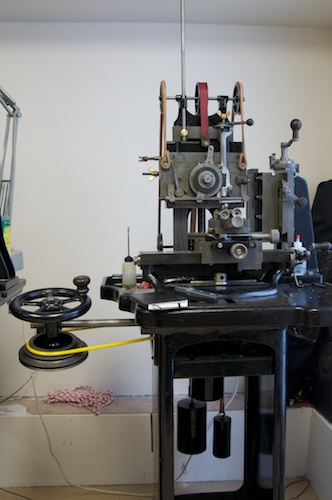Engine Turning, or Guilloché, is a form of decorative engraving that is accomplished with the assistance of an engine. Its origins are rooted in the 18th century when artisan jewellers modified ornamental lathes, or rose engines, to cut metal using a fixed cutter. Rose engines used for ornamental turning typically use a live, or spinning, cutter to cut soft materials such as wood or ivory. I will be discussing rose engines and ornamental turning more in a later post.

The evolution of engine turning eventually led to the invention of the Straight Line Engine. The photo on the left is of the 14" Straight Line Engine that is in my shop. It was produced in the early 20th century by G. Plant & Son in Harborne, England. The 14" refers to the maximum length of cut that the engine can produce. Unfortunately G. Plant & Son closed up shop in the 1950's.
Through the use of different shaped pattern bars, the engine allows the operator to create a series of parallel or radial lines. Adjustments allow precise changes to each cut, creating stunning interference patterns. When combined with transparent enamel, pieces that have been engine turned truly come to life.